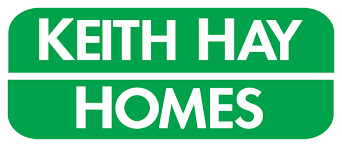As the year draws to a close, we’ve got a good understanding on likely changes to the property market and certainly which buyer groups are under the new
Government’s property spotlight. In short, property speculators and foreign buyers are the focus.
The Government has been clever in using the Overseas Investment Act to restrict foreign citizens buying existing property, but there’s no official measure
of foreign buyer activity – so the actual potential impact of this is an unknown. We have heard however that foreign buyer activity has already diminished
due to our banks not accepting foreign income to satisfy income criteria on mortgages, so my expectation is for pretty minimal overall impact. Maybe
chalk this one up to a savvy, popular political move as opposed to one with major market impact.
So it’s the focus on property speculators that’s really interesting. This group will be targeted with a two-fold approach: tax changes and improvements
to the rental market.
Tax changes for property speculators
None of the tax policy changes are fully confirmed yet but I expect the Brightline test to get an extension from 2 years to 5 years. To quickly recap,
that test ensures any profits made from an investment property sale within 2 years of purchase are taxed. The initial introduction didn’t have much
impact and I’d expect any extension to have a similarly low level impact.
The other likely tax change is to remove investors’ ability to negatively gear their properties (that is, they can’t claim back taxes for rental losses).
Anecdotally we’re hearing this could have more of an impact than initially thought. Especially when you factor in that capital gains have significantly
reduced lately, thus reducing the potential profitability of investment. Take away another source of ‘income’ and the financial benefits of owning
investment property are reduced.
Policy changes to influence the rental market
Looking at the rental market now and rental properties are going to have to satisfy a minimum standard of insulation and heating in the not-too-distant
future. This is via an amendment to the Residential Tenancies Act 1986 with the Healthy Homes Guarantee Bill recently passing through Government. But
it will take a while to come into force – starting in about 6 months, so it’s a longer term improvement. There will also likely be improvements to
tenants’ rights (in the form of reducing the ability of landlords to increase rents to once a year and extending the notice period for eviction).
Both these policy changes are minor tweaks, but when you add all this up there’s a lot to weigh on the mind of a potential property investor when assessing
their options. My feeling is that this will mostly impact purchase decisions and not selling decisions. Some investors will definitely be up for tough
decisions, and I’d anticipate overall demand to reduce, especially for the long term.
Tracking those listing, that’s certainly the case so far with no major change in the type of people listing their property at the moment. The mix between
owner occupiers and multiple property owners remains relatively consistent with the rest of 2017. Definitely one to watch though, the common hypothesis
says that if we see a lift in experienced investors divesting from the market, then that could be a strong indicator the market is in for tougher times
than we’d otherwise expect.
OCR, LVR and Housing Confidence
Rounding out the year’s events, the Reserve Bank left the Official Cash Rate (OCR) unchanged, as expected. We don’t expect to see any movement in the OCR
until at least 2019. The Reserve Bank also recently announced a modest easing of the current LVR restrictions. From 1 January 2018, the LVR restrictions
will require that: no more than 15 percent (currently 10 percent) of each bank’s new mortgage lending to owner occupiers can be at LVRs of more than
80 percent, and no more than 5 percent of each bank’s new mortgage lending to residential property investors can be at LVRs of more than 65 percent
(currently 60 percent).
Interestingly, ASB’s Quarterly Housing Confidence Survey was released early November, reporting price expectations dropping to a 6-year low. Again this
isn’t too much of a surprise given the recent slowdown in the market, contributed to by the Election & new Government uncertainty. What it does
tell us is that potential buyers can remain cautious and less desperate with their purchases if they don’t believe prices are going to increase anytime
soon, which will prolong the current flatness in the market.
So there you have it: tough purchasing decisions ahead for investors, the jury’s out on the overseas buyer situation, and no obvious change in who is actually
selling their properties…yet.
ABOUT THE AUTHOR

NICK GOODALL
Head of Research, CoreLogic New Zealand
Nick Goodall has worked as an analyst across many industries for over 10 years. As the Head of CoreLogic’s Research Team, Nick produces
a fresh view on some of the public data as well as in-depth analysis of CoreLogic’s own unique datasets to provide a view you will never have seen
before.

This article is brought to you by our good friends at CoreLogic New Zealand, the home of property intelligence.














Add Comment